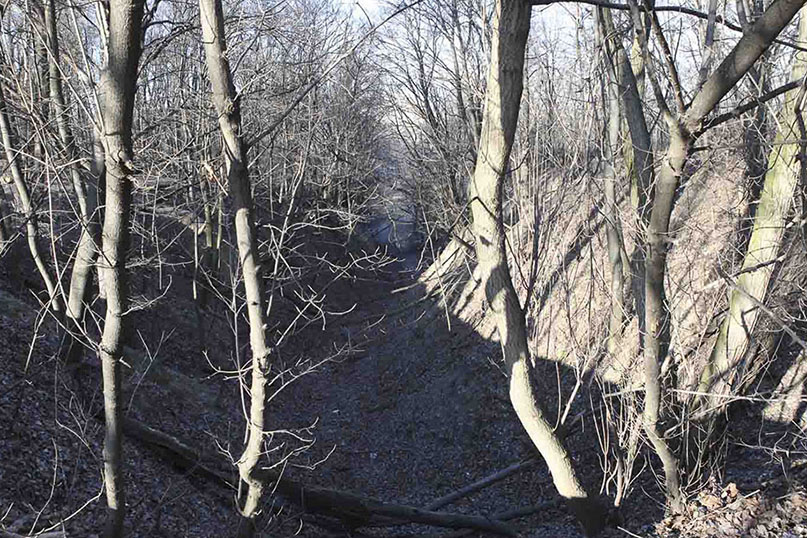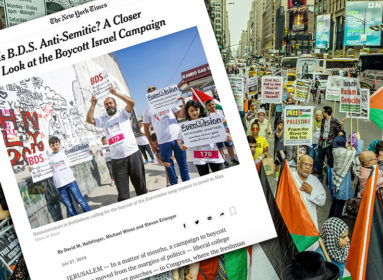
By Cnaan Liphshiz
(JTA) — Eighty years ago, a ravine in the north of what is now Ukraine’s capital city turned into a bloodbath as Nazis, aided by local collaborators, shot tens of thousands of Jews to death.
For two days at the end of September 1941, Ukrainian collaborators brought more than 33,000 Jews to the hills of Kyiv’s Babyn Yar ravine, where soldiers in Adolf Hitler’s army executed group after group of defenseless victims — children, as well as women and men of all ages.
The victims were shot with machine guns into pits. After none remained standing, the perpetrators would jump into the pit with their victims to finish off the dying and those pretending to be dead. Then the bodies were buried and a new group of victims brought to stand atop the fresh, thin layer of earth covering their brethren.
The 80th anniversary of the massacre, the first mass shooting in what is known today as the “Holocaust of bullets,” is eliciting a wave of commemorations, including a ceremony in Israel to honor a survivor and a memorial coin in Ukraine, where Nazi collaborators are increasingly being celebrated alongside their victims.
It is also reinvigorating a German lawyer’s mission to bring to justice a man he says may be the last Babyn Yar perpetrator alive, a 99-year-old German man named Herbert Waller.
For Hans Brehm and his partners, the attempt to indict Waller is a symbolic, last-ditch effort to correct decades of what they see as inaction by German authorities against almost all the people responsible for the largest single pogrom of Jews during the entire Holocaust. Of an estimated 700 participants, only 10 have ever been convicted of a crime.
Last week, Brehm traveled to Kyiv to speak with relatives of victims of Babi Yar victims. That’s because under German law, parties affected by major crimes may initiate criminal proceedings against defendants even if prosecutors decide not to indict.
“I want to have the man dragged in front of a judge,” Brehm told Der Spiegel this week. He is aware there is little chance of the court punishing such an elderly defendant, he said. Brehm said he only wants to see Waller indicted, and if found guilty convicted.
“This is about atonement, about late justice,” Brehm said.
Waller’s name in 2014 was first flagged to Germany’s Central Office of the State Justice Administrations for the Investigation of National Socialist Crimes, in a list of 80 names given to them by Efraim Zuroff, the famed “Nazi hunter” of the Simon Wiesenthal Center. The men were members of the Einsatzgruppen: German army death squads that between 1941 and 1943 shot dead more than 2 million Jews in Eastern Europe.
In 2017, the office began investigating Waller but dropped the case after discovering he was stationed at Babyn Yar as a medic and therefore could not be proven to have actively participated in the killings.
Brehm, 73, isn’t buying the argument, he told Der Spiegel. “Why do you need paramedics in a massacre?” he said.
Zuroff told the Jewish Telegraphic Agency that he shares that skepticism. The Einsatzgruppen operated as any military unit, with members collectively participating in all missions.
“It’s ridiculous. It’s not like there were Jew killer Einsatzgruppen and non-lethal Einsatzgruppen,” he said.
Almost all of the perpetrators of the Babyn Yar massacre – historian Franziska Davies estimates there were about 700 men involved — have evaded justice.
At the Nuremberg Trials of the 1940s, one Nazi, Paul Blobel, was sentenced to death and executed for crimes at Babyn Yar, among other places. Two others were given prison sentences. A 1968 trial ended with prison terms of 4-15 years for seven defendants; three men were acquitted in those trials, the last of any Babyn Yar perpetrator.
“The inadequate handling of Babyn Yar [crimes] is unworthy of a constitutional state,” Brehm said.
In his experience, Babyn Yar, also called Babi Yar, means nothing to Germans today, regardless of their ages. “When I ask people if they know about it, they ask if it’s the name of a city in Mongolia,” he told Der Spiegel.
In Ukraine, Babyn Yar is also relatively obscure, partly due to communist authorities’ decades-long refusal to commemorate it. It was part of a broader policy that downplayed the suffering of Jews in the Holocaust, coopting it into the Soviet narrative about patriotic sacrifice in a fight against Nazism.
To correct that wrong, philanthropists, activists and Ukrainian authorities are establishing a new museum and memorial center at the site, the Babyn Yar Holocaust Memorial Center. Various initiatives to commemorate the Babyn Yar victims have previously failed to materialize and, for decades, the only reminder of the tragedy were a couple of small and neglected monuments in areas where packs of stray dogs roamed by day and drunks gathered at night.
Ukraine’s central bank has issued a commemorative coin for the 80th anniversary, the first time such an initiative has taken place in Ukraine.
In Israel, the Knesset last week met to mark the anniversary; Knesset Speaker Mickey Levy presented a medal to Michael Sidko, one of the last known survivors of the murders there. He was 6 years old at the time. He recalled in a video produced in conjunction with the anniversary how a Ukrainian collaborator beat his sister to death in front of his mother, who was holding his 4-month-old baby brother. His mother collapsed, and the collaborator killed the baby, as well. “I remember everything. Down to the tiniest details. But I don’t want to remember. It’s too painful,” he said.
On Oct. 6, the Ukrainian government will hold a commemorative ceremony and event at Babyn Yar, attended by Ukrainian President Volodymyr Zelenskyy, who is Jewish, along with Israeli President Isaac Herzog and the president of Germany, Frank-Walter Steinmeier.
Yet amid the growing awareness in Ukraine to Babyn Yar, the country is also seeing a surge of celebrations of the actions of local collaborators who facilitated and at times participated in the Nazi-led murders.
Multiple streets have been named in recents years in Ukraine for Roman Shukhevych. His troops are believed to have killed thousands of Jews. He and another Ukrainian nationalist, Stepan Bandera, are among the men being celebrated as heroes today for teaming up with Nazi Germany against the Soviet Union during World War II.
In Kyiv, city authorities have announced their intention to set up signs commemorating the wartime mayor of Kyiv, Vladimir Bagaziy, as a victim of the killings at Babyn Yar.
Bagaziy was killed there, along with tens of thousands of other non-Jews, but months after the massacre of local Jews and only after he had initially collaborated with the Nazi occupation. According to some testimonies, Bagaziy was seen observing the murder of Jews at Babyn Yar when he was still an ally to the Nazis. The intention to honor him in connection with Babyn Yar provoked protests by the Ukrainian Jewish Committee, one of several groups representing the interests of Ukrainian Jews.
The two trends – commemorating the victims while celebrating some perpetrators – “don’t work together,” Zuroff said, citing protests by Israeli, Polish, German and US diplomats.
Zelensky has made clear his dislike for the veneration of people like Bandera, but he has not banned it or intervened against it – actions which would likely not help his plummeting popularity or his plans at leading economic reform.
“Eventually Ukrainians will have to choose where they stand on this,” Zuroff said. “I believe they’ll make the right choice.”
Main Photo: The Babyn Yar killing site in Kyiv, Ukraine is made up of dozens of ravines and ditches where the German occupation forces and their allies killed tens of thousands of Jews and non-Jews in September 1941. (Courtesy of the Babyn Yar Holocaust Memorial Center.)








 Southern New England Jewish Ledger
Southern New England Jewish Ledger














